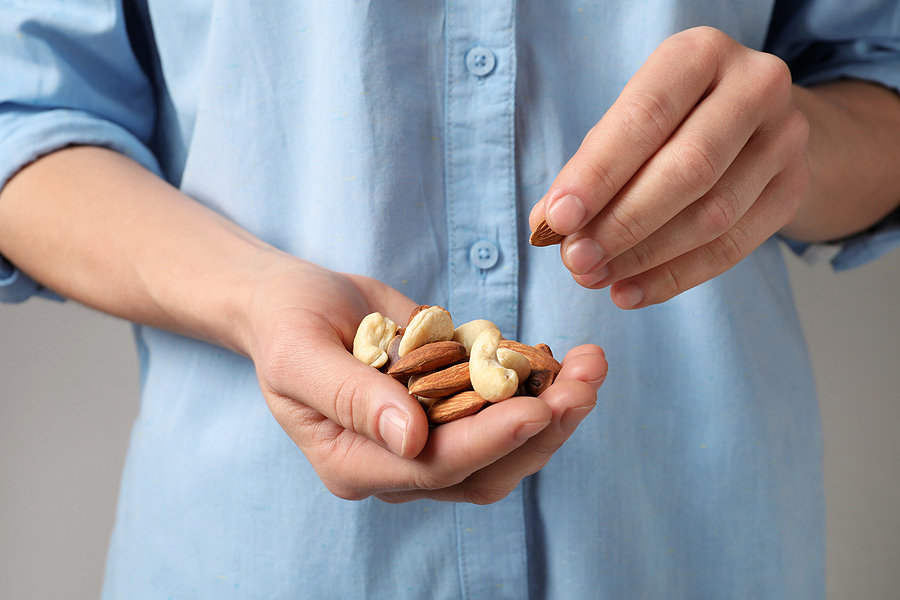Here we are, in full swing of summer. So many of my clients have told me that they’re really feeling the aftereffects of the homemade banana bread we ate or the daily rosé we drank during the pandemic. That was fun!
What’s not fun for a lot of my clients is the way their body looks as they try to squeeze into their bikini for some summer fun. Even those without bikini goals are telling me they aren’t feeling great about their current weight and the way their bodies feel.
Hilary, a 40 something mother of two, is a great example. She came to see me about weight loss, because although she says she’s not “technically” overweight, she is a good 15 or 20 pounds over what she envisions as her ideal weight.
She’d been researching the science behind fasting and came to my office excited to try it. She was also armed with both skepticism and a great deal of curiosity. Her biggest worry was that she didn’t have the willpower to stick with a fasting program since she loved food so much. Who doesn’t?
As I do with so many clients who feel like they simply can’t go without eating for as long as a traditional fasting program suggests, I recommended she do a fasting mimicking diet.
Have you heard this term before? Many of my clients have, and quite curious about what all the hype is surrounding the fasting mimicking diet (FMD).
What is a Fasting Mimicking Diet anyway?
Fasting is one of the most ancient healing traditions in human history. It has been practiced by virtually every culture and religion on earth.
Fasting and intermittent fasting have become quite a trend in the health world recently, because they’re being used not only for weight loss, but to improve concentration, prevent insulin resistance and even reverse the entire aging process. But if the idea of not eating for 12, 14 or 16 hours – or even full days at a time – has you seeing stars, you might want to consider the fasting mimicking diet instead.
The Fasting Mimicking Diet provides all the benefits of a fasting diet, but you still get food. You eat during the day, but restrict your calorie intake significantly.
This effectively “tricks” your body into thinking you’re fasting, though what you’re actually doing is some food over a five-day period, a time-span that’s been associated with the benefits of fasting. The FMD also focuses more on what you can and can’t eat, as well as when you’ll restrict the number of calories you consume.
How Does the Fasting Mimicking Diet Work?
The Fasting Mimicking Diet reduces calorie intake for five days; it’s never about not eating anything at all. The idea is to supply your body with just enough calories to feel satiated, but not full. It’s also designed to allow your body to enter gluconeogenesis, the process by which the body converts fat and other non-carbohydrates to glucose (i.e. body and mind fuel).
For example, on day one, you would consume about 1,100 calories, though this varies depending on your gender, activity levels, and weight. Of those calories, 11% should come from protein, 46% from fat and 43% from carbohydrate.
On days 2 through 5, you’’ll consume just 725 calories per day, with a macronutrient breakdown of 9% protein, 44% fat and 47% carbohydrate. Throughout the five days, it’s important to stay well-hydrated. Aim to drink two to three liters of water a day.
The FMD only requires you to follow the program for five days each month. During the rest of the month, you will rely on regular eating patterns and healthy meals with fresh ingredients. That means that by day six you can slowly transition into light meals – but don’t reach for that burrito or double latte!
While in the five day period of restricted eating, it is important to take it easy and go walking, do some stretching, and light yoga rather than vigorous exercise. The idea is to help your body reset.
What are the origins of the FMD?
This approach to eating was pioneered by Dr. Valter Longo, PhD, a highly intelligent and funny Italian biogerontologist, cell biologist and director at the University of Southern California’s Longevity Institute in Los Angeles. Longo is one of the leading researchers on fasting and how it may influence health and longevity.
Based on the impressive findings of his years of extensive research in both animals and humans, Longo founded the L-Nutra technology company and developed the ProLon Fasting Mimicking Diet, a patented meal program you can buy. This helps consumers get on the fasting mimicking program easily and with convenience. The ProLon prepackaged meal kit consists of plant-based, whole foods and does not include the use of any meat or dairy foods, gluten, GMOs or processed foods.
I can see why ProLon is hugely popular among busy New Yorkers and has developed an almost cult like following among celebrities like Gwyneth Paltrow. The packaging is sleek and modern, and the instructions are straightforward. The meal program includes all the foods you need in measured quantities to stick with the plan for five days.
You get five boxes with all the food you should consume for each day. The boxes include healthy nut bars, kale crackers, olives, soup packets, herbal teas, supplements and the glycerol-spiked hibiscus tea you continuously sip all day. You don’t really have to think about it at all.
Following the program takes minimal effort, especially if you don’t mind boxed foods like dehydrated soup blends, where you just add hot water, and packaged bars. It does come at a bit of a hefty cost, though, at $250 for the meal kit.
Can you do the Fasting Mimicking Diet without buying Prolon meal program?
Yes! Of course! If you have the time to get into the kitchen and make all the food yourself then you don’t need to spend $250. You can do this 5 day FMD with fresh, high-quality food for a lot cheaper.
It will require some preparation and cooking, which means you’ll be investing your time instead of money. It’s certainly not impossible and you might actually enjoy the process!
You’ll have to pay close attention, as the program requires very strict and diligent adhering to calorie, macronutrient and micronutrient amounts. Many people have done a DIY fasting mimicking diet on their own and there are tons of recipes online that you can follow.
The FMD must meet the following criteria:
- All plant-based
- About 500 calories from complex carbohydrates (vegetables such as broccoli, tomatoes, carrots, mushrooms, etc.) on day 1 of the diet, 400 calories on days 2–5.
- About 500 calories from healthy fats (nuts, avocado, olives, olive oil) on day 1 of the diet; 400 calories on days 2–5.
- About 1100 calories on day 1 of the diet; 800 calories on days 2–5.
- About 25 g of plant-based protein (mostly from nuts) on day 1 of the diet. Less than 18g of plant-based protein on days 2–5.
- Less than 30g of sugar on day 1; less than 20 grams on days 2–5.
- Include a multivitamin/multimineral supplement and an omega 3/6 supplement
What are the benefits of an FMD?
Weight loss is often the immediate goal, but there are many benefits beyond that to following a fasting mimicking diet. More than a decade of research have shown outcomes that are quite impressive.
This method of “fasting with food” also reduces some of the risks tied to extreme fasting, which may include very low blood sugar and/or blood pressure, fatigue, and low productivity. It is a very specific combination of limited plant protein, calorie restriction, good fats, and low-glycemic index carbohydrates that regulates the body’s nutrient-sensing pathways, meaning cells believe they’re not being fed.
At the same time, the diet triggers anti-aging pathways responsible for cellular repair and regeneration for healthy aging. It also activates autophagy – the process of removing damaged and worn-out cellular components, promoting cellular renewal and helping your body rejuvenate.
By providing your body with essential nutrients while it’s operating in fasting mode, after multiple (3) consecutive monthly cycles you’re able to maintain lean body mass- something normally lost during a traditional prolonged fast.
But will I lose weight?
Yes, you can definitely lose weight but as with any program, everyone’s results will vary. While you do lose weight because the calories are low, there is an additional effect that comes along with metabolic benefits and not the primary purpose.
In a study of 100 people who followed the fasting mimicking diet, each person lost an average of 5 pounds and the majority of this weight loss came from abdominal fat. They also lost 1 inch off of their waist on average.
Of course, if you revert to unhealthy habits like banana bread and rosé daily, that weight will come right back. Making healthy choices most of the time is vital to maintaining weight loss!
Who is not for?
You should not try the FMD if you’re pregnant or nursing, under the age of 18, underweight, or have a history of an eating disorder.
Also it is not recommended for people who are have protein or nutrient deficiencies, have specific dietary needs that are mismatched with the FMD meal plan, are sensitive or allergic to soy, nuts, seeds, or oats (when using the prepackaged foods), and anyone with a chronic medical condition,(unless cleared by a medical professional) – particularly blood pressure issues, diabetes, cardiovascular disease, and certain forms of cancer.
The overall takeaway…
Regardless of whether you’re fit and healthy, you should get the guidance from a registered dietitian or other health professional before starting a fasting mimicking diet. Their guidance will ensure that you’re still getting all the nutrients and vitamins you need for complete nutrition.
Diets are only effective if they are reasonable to follow and maintain. That’s why I often recommend against fad diets and encourage a healthy lifestyle instead. But when you need a little boost, or you’re trying to create healthier habits, the FMD can help.
If you decide to try FMD think about your “why”. What do you hope to get out of the experience? I’ve often heard that a lasting benefit of the FMD isn’t about what happened in those five days as much as it was the value of a reset.
The FMD allowed them to eat mostly clean after they were finished, and that was easier to stick to long term. Many clients tell me they feel so much healthier than they did on day one. Who wouldn’t want that?
Hilary did indeed try a five day fasting mimicking diet after we talked about it. She lost almost four pounds in that five days and felt great!
She said that her biggest takeaway was how conscious she is now about everything she puts in her mouth. Since doing the FMD, Hilary has continued to eat much smaller portions than she used to, most of them plant based, and she limits her protein intake better.
For the first time in years, she said, she really feels like she is on the path to losing the pregnancy weight she never got rid of after having her children. The FMD really worked for her! When I last spoke to her, she’d lost an additional three pounds, and was gearing up for a great summer. Perhaps this will be her bikini season after all!







